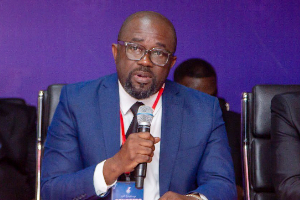Ghana's private pension funds made up of Asset Under Management and the Temporary Pension Fund Account rose to GH¢4.7 billion as at close of 2015, representing 3.3 percent of the country’s GDP, data from the National Pensions Regulatory Authority (NPRA) has shown.
The 2015 total private pension fund grew by more than 480 percent of the amount recorded in 2012, when it was GH¢805 million – about 1 percent of the country’s GDP.
Speaking on how to best utilise these funds, David Ofosu-Dorte, a Senior Partner at AB and David law firm, the funds accrued by the privately managed schemes should be used to finance high yielding long-term projects like infrastructure.
“Funds collected under Tier-2 and Tier-3 schemes in last three years is quite impressive and we need to find something to do with it,” Mr. Ofosu-Dorte said, adding that we could use it to finance some of our long-term projects rather than going for loans abroad.
Non-compliance
Despite the growth in the pension funds, the NPRA said out of 91,321 private employers, 51,466, about 56 percent were active under the SSNIT scheme. Out of the active establishments registered, only 10,610 are active under Tier-2 pension scheme with as many as 40,856 employers without the mandatory Tier-2 schemes.
The failure of the private firms to pay workers’ contribution to the Tier-2 schemes, to many shows the ineffectiveness of the new pension scheme as it has created a potentially explosive situation as many workers near retirement in the midst of shaky pension funds.
The current three-tier pension system, enacted into law in 2008, demands employers to register their staff under a first-tier basic pension scheme managed by SSNIT and a second-tier work-based scheme that is privately managed and is expected to give contributors higher lump sum benefits than presently available under the SSNIT or Cap 30 pension schemes. The third-tier is voluntary and includes provident funds and personal pension schemes.
The reforms, which ended the monopoly of SNNIT, were hailed as a major step toward improving the retirement conditions of workers through competition that will maximise the returns earned on pension investments.
It is projected that the reforms will grow the assets of the pension industry from GH¢1.06billion to GH¢5.5billion over the next three years.
The new pension law, the National Pensions Act 2008 (Act 766), requires an additional contribution rate of 1percent to be shared equally between the employer and employee. The employer pays 13percent (instead of the current 12.5percent) and the worker now pays 5.5percent (instead of the current 5percent) making a total contribution of 18.5percent (instead of the current 17.5 percent).
Currently, the NPRA approve, regulate and monitor Trustees, Pension Fund Managers, Custodians and other institutions relating to pension matters. It also advises government on the overall policy on pension matters in Ghana.
Business News of Wednesday, 14 December 2016
Source: B&FT













